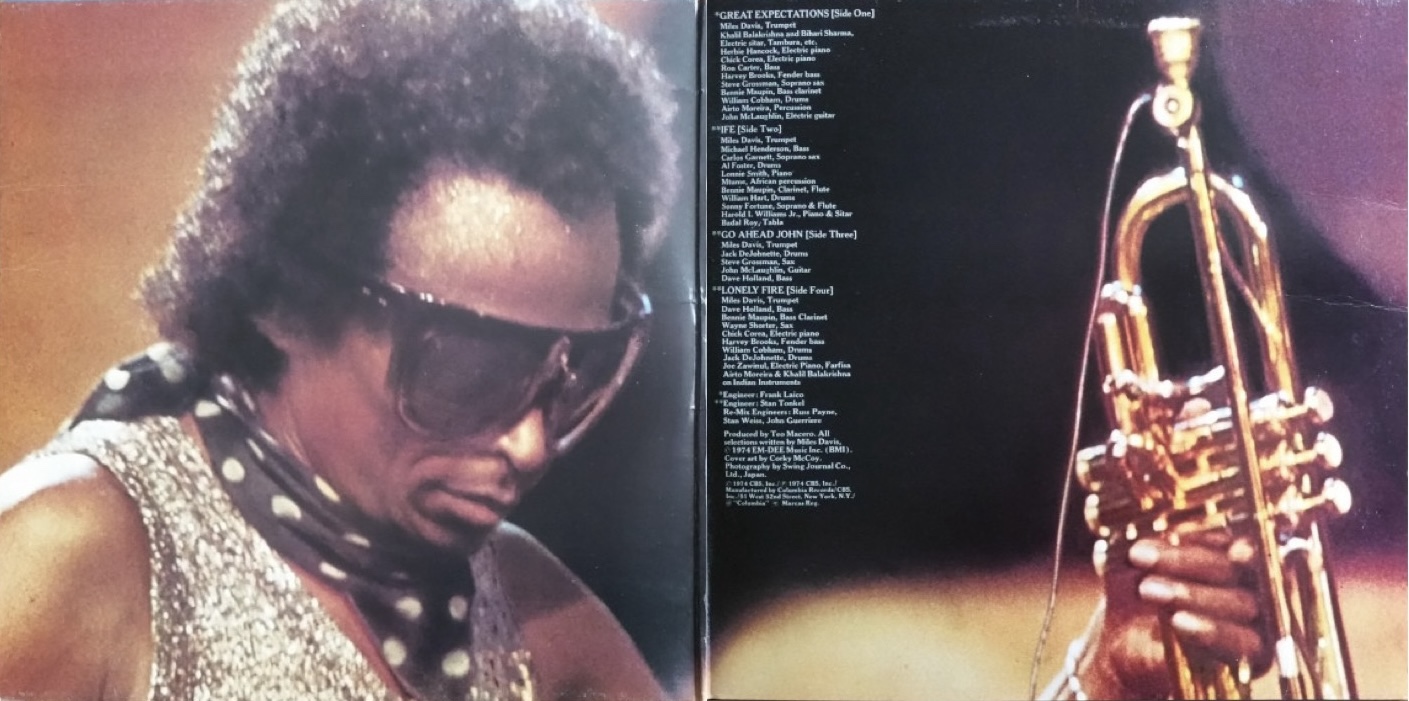Big Fun turns 50 years. It is a collage album of Miles Davis’ electric years.
Miles Davis – Big Fun (Columbia, 1974)
The controversy of Miles Davis going electric in the late 1960s was even greater than the one surrounding folk singer Bob Dylan transforming into an electric rock star. Davis relation with the tradition of acoustic jazz was more than 20 years when he plugged in and fans and critics became confused and estranged.
This decision coincided with a seldom seen rush of creativity. Miles Davis and various band members seemed to enter the recording studio every other week. Today all the music recorded has been collected in exhaustive boxes, but Big Fun was the first attempt to grab the bull by the horn and release some of the great bulk of unreleased music from 1969-72 as a sort of collage album.
Another reason for going back was that Davis had recorded considerably less new music while there was still a demand for new product. The original double album released in 1974 featured four sidelong tracks: two from the Bitches Brew era; one from the Jack Johnson sessions; and one from the more recent On the Corner sessions.
“Go Ahead John” from March 1970 features a quintet with soprano saxophonist Steve Grossman, guitarist John McLaughlin, bassist Dave Holland, and drummer Jack DeJohnette. The instrumentation and the powerful character of the song reminds of the Jack Johnson album which was recorded at the same time with another but similar rhythm section. Davis is in fine form and blows a long forceful solo. The real surprise is when he starts playing a duet with himself on a blues section. The effect was created in post-production by producer Teo Marcero using a loop which superimposed part of the solo onto others.
An electric overview
“Great Expectations” from November 1969 is Davis exploring an ensemble sound very similar to the one on Bitches Brew with multiple keyboardists, bassist, drummers, and with electric guitar and bass clarinet. The difference is that he also adds electric sitar and tabla. A part of the composition is Joe Zawinul’s “Orange Lady” which he and Shorter released as Weather Report, but neither of them plays on this recording where Herbie Hancock and Chick Corea shares keyboard duties, and Steve Grossman plays soprano saxophone.
“Lonely Fire” from January 1970 is more from the same kind of ensemble but with Zawinul and Shorter back. It is a melancholic slow-moving piece which picks up a faster tempo in the latter part which provides some variation.
“Ife” from 1972 has a similar ensemble, but the only constant in personnel is clarinetist Bennie Maupin. The music is more rhythmic static and hurried, and Davis has begun using the electric wah-wah-pedal which alters the sound of his trumpet to be more claustrophobic compared to his earlier more powerful playing. It gives the music a more mournful character.
The album still sounds great. It can almost serve as an overview of Davis’ electric period from 1969-72. In the digital age it has been expanded with some shorter pieces from the post Bitches Brew sessions, but the original selection is the four greatest tracks.


